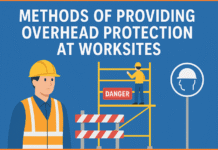When it comes to ensuring safety in any workplace, one of the key elements is the process of Hazard Identification and Risk Assessment (HIRA). HIRA plays a crucial role in identifying potential hazards and evaluating the associated risks to prevent accidents, injuries, and damage to property. In this blog post, we will delve into the importance of HIRA in safety management and explore how it can be effectively implemented.
Contents
What is Hazard Identification?
Hazard identification is the process of identifying potential sources of harm or danger in the workplace. It involves systematically identifying and documenting hazards that have the potential to cause harm to people, property, or the environment. Hazards can include physical, chemical, biological, ergonomic, and psychosocial factors. By identifying these hazards, organizations can take appropriate measures to eliminate or control them, reducing the risk of accidents and injuries.
Why is Risk Assessment Important?
Risk assessment is the process of evaluating the likelihood and severity of potential risks associated with identified hazards. It involves analyzing the likelihood of an incident occurring and the potential consequences if it does. Risk assessment helps organizations prioritize hazards based on their level of risk, allowing them to allocate resources effectively and implement control measures accordingly. By conducting risk assessments, organizations can make informed decisions to minimize risks and ensure a safer working environment.
The HIRA Process
The HIRA process typically consists of the following steps:
- Identify Hazards: This step involves systematically identifying and documenting potential hazards in the workplace. It can be done through workplace inspections, reviewing incident reports, consulting with employees, and analyzing work processes.
- Analyze Risks: Once hazards are identified, the next step is to assess the risks associated with each hazard. This involves evaluating the likelihood and severity of potential consequences and considering factors such as exposure, vulnerability, and existing control measures.
- Implement Control Measures: Based on the risk assessment, control measures are implemented to eliminate or minimize the identified hazards. This can include engineering controls, administrative controls, and personal protective equipment.
- Monitor and Review: Safety measures should be regularly monitored and reviewed to ensure their effectiveness. This includes reviewing incident reports, conducting audits, and seeking feedback from employees.
Benefits of HIRA in Safety Management
Implementing HIRA in safety management offers several benefits:
- Prevention of Accidents and Injuries: By identifying hazards and assessing risks, organizations can take proactive measures to prevent accidents and injuries in the workplace.
- Compliance with Legal Requirements: HIRA helps organizations comply with legal and regulatory requirements related to workplace safety. It ensures that necessary measures are in place to protect employees and prevent potential liabilities.
- Cost Savings: Effective implementation of HIRA can lead to cost savings by preventing accidents, reducing downtime, and minimizing damage to property and equipment.
- Improved Employee Morale and Productivity: A safe working environment enhances employee morale and productivity. HIRA helps create a culture of safety and demonstrates an organization’s commitment to the well-being of its employees.
Hazard Identification and Risk Assessment (HIRA) is a crucial process in safety management. By systematically identifying hazards and assessing associated risks, organizations can implement control measures to prevent accidents, injuries, and damage to property. HIRA not only ensures compliance with legal requirements but also promotes a safe and productive work environment. By prioritizing safety and implementing HIRA effectively, organizations can protect their most valuable asset – their employees.





